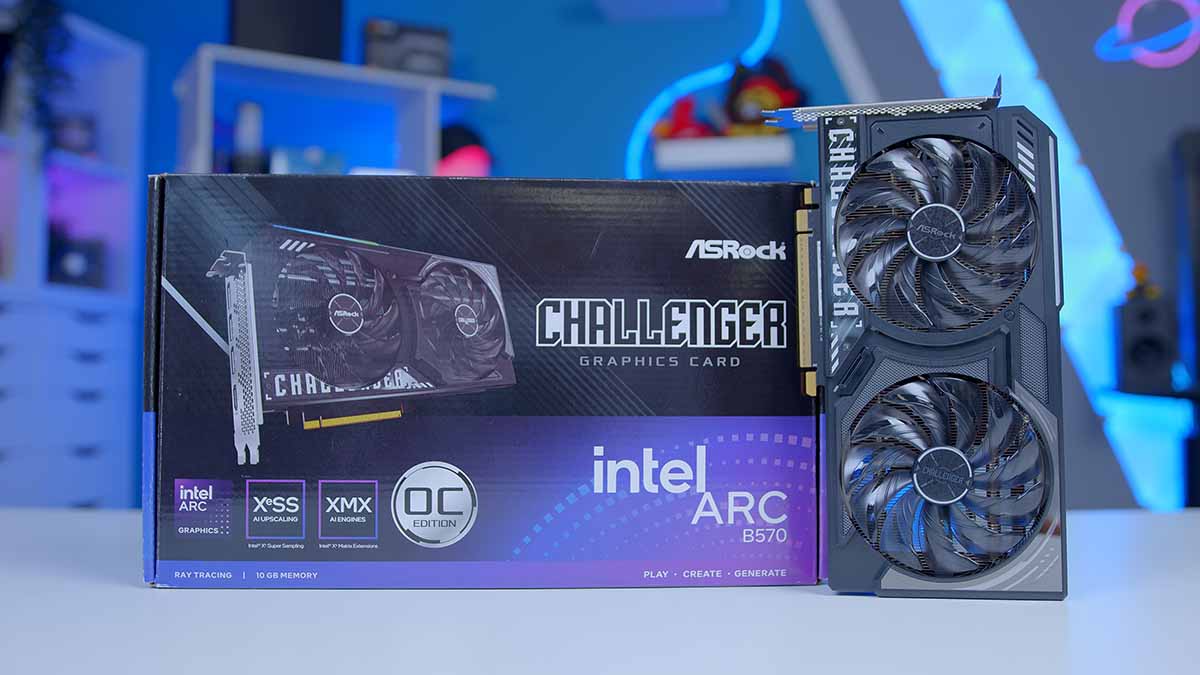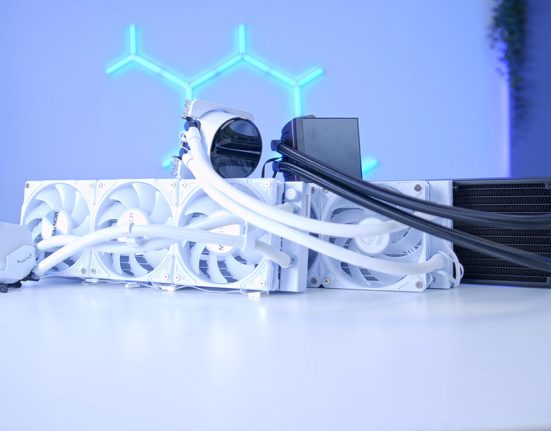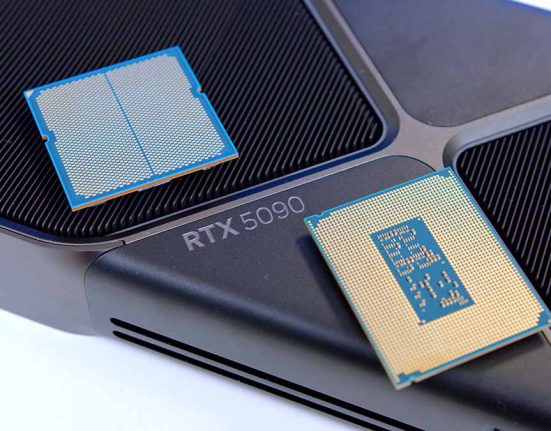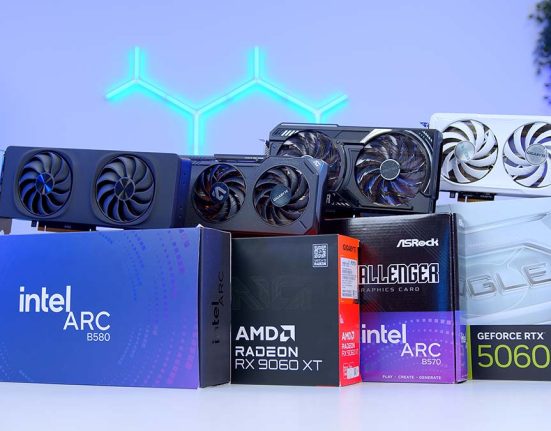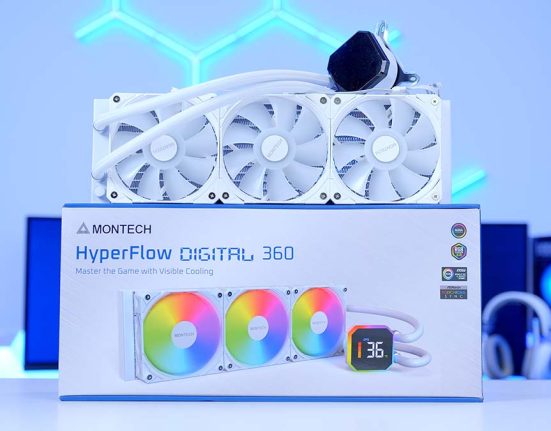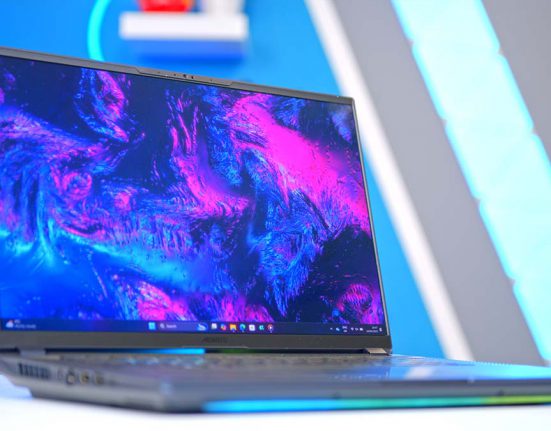With the launch of the B570, Intel has given some much-needed love to the budget end of the market. Releasing at an MSRP of just $219, the B570 puts clear distance between itself and other ‘budget’ offerings from AMD and NVIDIA with its pricing. It’s no secret that PC prices, particularly GPU prices, have continued to increase over the last few years, making sub $1000 gaming PCs incredibly difficult to build without sacrificing something somewhere along the line. The B570, though, with 10GB VRAM, healthy base and boost clock speeds and frame generation capability, seemingly looks an ideal solution.
As we saw with the release of the ARC B580, the Intel GPU package offering is now much more substantial. Having learned from the somewhat rocky launch of Intel Alchemist GPUs plagued by driver and compatibility issues, Intel has really honed their craft with Intel B-series (Battlemage) GPUs and, as such, offers a far superior experience right out of the box. Architecture improvements only further add to this too. With the AI Upscaled performance of the B580 rivalling that of the offerings from both AMD RX 7000 and even RTX 40 Series GPUs, the B570 has the potential to be a smash hit then, if it follows in the footsteps of the B580.
But have Intel released the ARC B570 at the wrong time? Against the backdrop of new releases from both AMD and NVIDIA post-CES, is the ARC B570 already outdated, generationally behind, and unable to compete, all before it’s even impacted the market? I’ll cover all of this and more in this review, giving you my thoughts on how the B570 stacks up and whether or not the ARC B570 is a worthwhile purchase.
Buy the Intel ARC B570 on:
Specification
For just $219 at MSRP, the ARC B570 boasts an impressive specs list and stacks up surprisingly well against considerably more expensive GPUs. For your money, you get a GPU with 10GB GDDR6 video memory as standard, something that is becoming increasingly important in modern triple-A titles, strong clock speeds, both in excess of 2.5GHz and raytracing compatibility.

Elsewhere, efficiency remains strong, with power consumption sitting at just 150W. Xe cores and Raytracing units receive slight downgrades from what we saw in the B580, in the region of 10% for both and perhaps the biggest weakness of the B570 is the change to a 160-bit memory bus. The weaker memory bus should, in theory, weaken performance on the B570 compared to the B580, with less data transferring capability, ultimately resulting in lower memory bandwidth. By just how much however, I’ll touch on later.
| Key Specs | Intel ARC B570 | Intel ARC B580 | Intel ARC A750 |
|---|---|---|---|
| Video Memory | 10GB GDDR6 | 12GB GDDR6 | 8GB GDDR6 |
| Memory Bus | 160-bit | 192-bit | 256-bit |
| Base Clock Speed | 2500 MHz | 2670 MHz | 2050 MHz |
| Boost Clock Speed | 2750 MHz | 2850 MHz | 2400 MHz |
| Xe-cores | 18 | 20 | 28 |
| Render Slices | 5 | 5 | 7 |
| Ray Tracing Units | 18 | 20 | 28 |
| Power Consumption | 150W | 190W | 225W |
| MSRP | $219.99 | $249.99 | $249.99 |
Although strong for the ARC B570, pricing could also pose issues in the current market. I’ll be the first to admit it’s great to see a capable budget GPU enter the market for in the region of just $200. Whether the B570 will be readily available for its MSRP pricing, however, is another issue. On Newegg, every available model of the ARC B580 currently sits above its MSRP of $249 and by a fair margin in some instances. The good news, however, is with the B570 launching so cheap, it should have enough room in its pricing structure to offset any potential price bumps and still be the go-to value option.
Architecture
The Xe2 architecture marks a stark change in class versus Intel’s inaugural attempt. Now vastly improved, the Xe2 architecture has the feel of a more refined product produced by a longstanding industry player. Whilst yes, Intel themselves have been around now for as long as I can remember, their venture into the world of desktop GPUs is still only in its infancy. Xe2 is a clear-cut above the initial Xe architecture released with Intel Alchemist GPUs.
Now, featuring largely improved Super Sampling tech and Intel’s version of Frame Generation, both aptly named XeSS2 and Xess-FG, respectively, the Battlemage GPUs act as a stronger proposition from the jump whilst also landing at stronger price points.

Utilisation is another key area where Intel has made significant improvements. Intel claims up to 70% higher utilisation per Xe core whilst also offering up to 50% better energy efficiency in certain scenarios. Paired with the architectural improvements to AI tech and image upscaling, Intel have made clear strides to having readily competitive desktop GPUs.
The introduction of frame generation and improved raytracing performance are huge bonuses for the Battlemage GPUs. With AI tech becoming all the rage in the last few years, failing to implement a working solution would, to put it simply, have left the B-series GPUs lagging behind. Intel, however, has done a stellar job at getting both implemented and to such a high standard from a standing start.

During our in-house testing, we found the ARC B570 to not only compete with both the RX 7600 and RTX 4060 in raytraced scenarios but, more often than not, be competing for the top spot.
For those who are unaware, frame generation does exactly what its name says: (artificially) generates frames. Frame Generation, at its core, works by taking two singular frames and pushing them through a number of AI networks. By doing so, Intel is able to have the AI network interpolate frames, a process which generates a new frame to place in between the two initial frames used, resulting in smoother perceived visual fidelity and increased framerate.

This can introduce higher latency or ‘lag’, but thanks to the introduction of a ‘low latency’ mode (XeLL), it can be kept to a minimal increase. Particularly handy when enabling XeSS-FG and Raytracing. For even more info on XeSS-FG, check out our ARC B580 review.
This, then, looks to be a huge win for Intel but also for the industry. If anyone stands to take it to the AMD and NVIDIA duopoly, it’s Intel. However, with the recent news at CES, NVIDIA has since seemingly one-upped both AMD and Intel already with the introduction of their DLSS 4, capable of generating up to 3 in every 4 frames, sending framerates through the roof.
How the industry takes to this remains to be seen, but with many already unhappy at the apparent amount of ‘fake frames’ this tech is generating, there may be hope for the Battlemage architecture just yet.
Design
We have an ASRock Challenger OC model in-house, featuring a dual fan cooling solution and a 2-slot form factor. The ASRock Challenger OC design on the ARC B570 looks strikingly similar to past ASRock designs, but hey, if it isn’t broken…

It’s a move that makes sense too. The added efficiency of the B-series architecture makes the dual fan design all the more sufficient, even when maxing out the 150W TBP. The Challenger livery adjourns the rim of the rearmost fan and across the metal backplate, and an RGB strip lines the front edge. It’s a simple yet effective design methodology and arguably has more bells and whistles than I’d expect on such a cheap card.
A singular 8-pin PCIE Gen4 connection is used to power the Challenger OC B570, as expected, with a recommended PSU of 600W. Intel, in a similar fashion to AMD, is yet to change their power connector design, and whilst it can be slightly more space-invasive at times, it’s not necessarily a bad thing. The ASRock challenger OC model offers solid design choices across the board and, given its small form factor, should have no issues fitting in even the smallest of cases.

Performance
Performance is a key area in any GPU review, and for this, I tested the ASRock Challenger OC B570 model across our typical benchmarking suite of titles across a range of settings, presets and resolutions. I paired the B570 with a Ryzen 7 9800X3D to maximise performance before comparing and contrasting head-to-head against a selection of similarly priced GPUs, all of which I also paired with the 9800X3D.
Cyberpunk 2077
Straight out of the gate, the ARC B570 put in strong performance. Beating out both the Radeon RX 7600 and similarly priced last generation RTX 3050 pretty comfortably in Cyberpunk 2077 at 1080p high settings. Sitting less than just a singular FPS behind the RTX 4060 as well, the ARC B570 reaps the benefits of the improvements made to the Xe2 architecture. The result is even more impressive when considering the lower MSRP of the ARC B570 to that of both the RTX 4060 and RX 7600. The ARC B580 only further hammers home the point, taking the top spot with relative ease.

1440p high settings offered a similarly positive story. The ARC A570, this time beating out everything but the ARC B580 in what seemingly marks the passing of the proverbial torch. This is nothing short of impressive work on Intel’s behalf. Providing GPUs capable of dethroning both AMD and NVIDIA at just their second attempt is astounding. Cyberpunk 2077 has historically been a hard title to run, for the ARC B570 to be beating out the competition at a lower pricepoint whilst averaging similar 1% lows as well is great to see.

Alan Wake 2
In Alan Wake 2, however, we see the other side of the ARC B570. At 1080p high settings, the ARC B570 struggles to get near the 60 FPS mark at all, with the 1% and 0.2% lows only further compounding the misery.
I do find Alan Wake 2 is typically the most demanding title during our benchmarking sessions, so this result didn’t come as too much of a surprise but for those looking to play at 60 FPS the B570 isn’t the best choice here.

Hogwarts Legacy
As for Hogwarts Legacy, the B570 falls slightly short of its more expensive rivals at the 1080p mark, with a sizeable margin in terms of averages, as well as having the lowest 1% and 0.2% of the pack. 78 FPS, however, is more than enough performance for a single-player title like Hogwarts Legacy, with the B570 still providing plenty of bang for your buck. Whilst the percentage lows are a little lower than the competition, the ARC B570 proves it is still more capable of playing at 1080p High settings here.

However, the B570 certainly closes the gap when jumping up to 1440p, with a much more marginal difference in average FPS, 1% and 0.2% to match, putting it close to the RTX 4060 when playing at higher settings. Again, clearing the 60 FPS mark, this time at 1440p High settings, the ARC B570 came as a shock package here. 1440p capable for just above $200 is really good value, and whilst it won’t be able to hit that 60 FPS mark in all titles, it certainly does in Hogwarts.

Apex Legends
In Apex Legends, testing came with expected results as well as surprises. After finding the B580 card struggled at 1080p resolution when compared to both NVIDIA and AMD counterparts, it was no shock to see the B570 followed the same trend, but what did surprise us was the B570 actually outperformed the B580 across the board, too. While it highlights a particular triumph for the B570, both still sit some way behind the front runners.

At a higher resolution, order is restored for Intel, but the B570 is certainly not beaten heavily here. While it has more instability and drops in average lows compared to the competition from NVIDIA and AMD, actual FPS averages run very similarly to NVIDIA’s RTX 4060. Again, the ARC B570 proves it has some legs to perform at even 1440p High settings. Even managing to surpass the 144 FPS mark for that ultra-smooth gameplay.

Fortnite
Fortnite is a similar story to Apex Legends, with Intel struggling to compete with NVIDIA and AMD. While averages are above the 250 FPS mark, they certainly fall way behind the others in this category. It’s interesting to see yet again, the similarity between the performance of the B570 to the B580, with fairly little to split the two apart, bar larger gaps between 0.2% lows. The ARC B570 again proves that you don’t always need to spend the extra cash upgrading to the next model, particularly when playing esports titles like Fortnite.

Conclusion
Intel ARC B570
Product Name: ARC B570
Brand: Intel
-
Features
-
Design
-
Performance
-
Value for Money
Summary
So, where does that leave us? Well, the Intel ARC B570 is the first true budget GPU we’ve had in what feels like a lifetime. With AMD and NVIDIA having shown little love to the sub-$250 price point in recent years, Intel has spotted a gap in the market and provided a great solution. Intel’s architecture update has once again proved a great triumph. Bringing a budget, 1440p and raytracing capable GPU to market for less than $250 is no easy feat, but Intel has done it and at just the second time of asking.
Yes, optimisations are still needed, and as we saw in the titles such as Alan Wake 2 and even Hogwarts Legacy at times, the B570 isn’t always capable of playing at maxed-out settings, but more often than not, the B570 punches well above its weight class, trading blows with the bigger boys of the GPU world. Let’s not forget this is a card that has an MSRP of just $219 at launch, and that money goes a long way with this GPU. Capable of playing at 1440p and even enabling raytracing at times, for $219, you get a lot more bang for your buck than we’ve seen with budget GPU launches of the past.
Whilst I do have my worries with the longevity of the B570, as I did with the B580, against the backdrop of new generational releases for both AMD and NVIDIA post-CES. With early murmurs showing no signs of either bringing a super-budget GPU to market, the B570, for now at least, looks here to stay and act as the go-to budget option moving forward.
Pros
✅ 1440p Capable
✅ Pricing
✅ Form Factor
Cons
❌ Longevity worries
❌ Percentage Lows
❌ Cooling Solution


